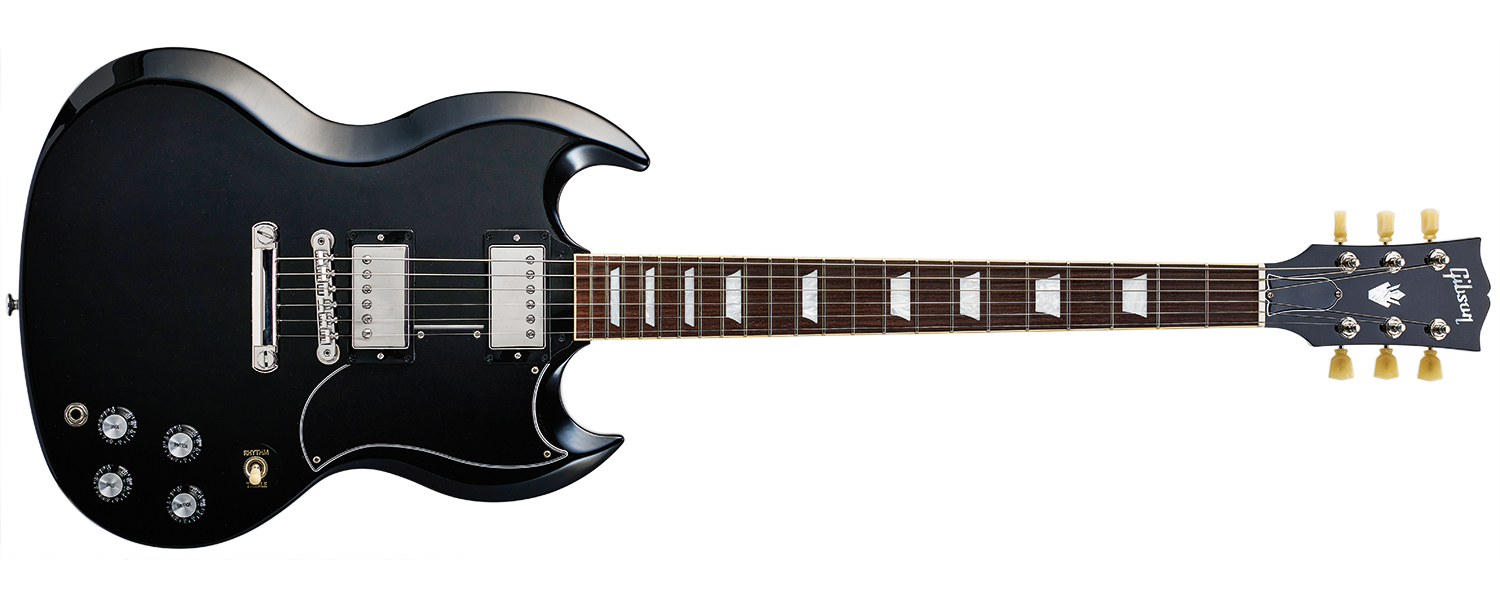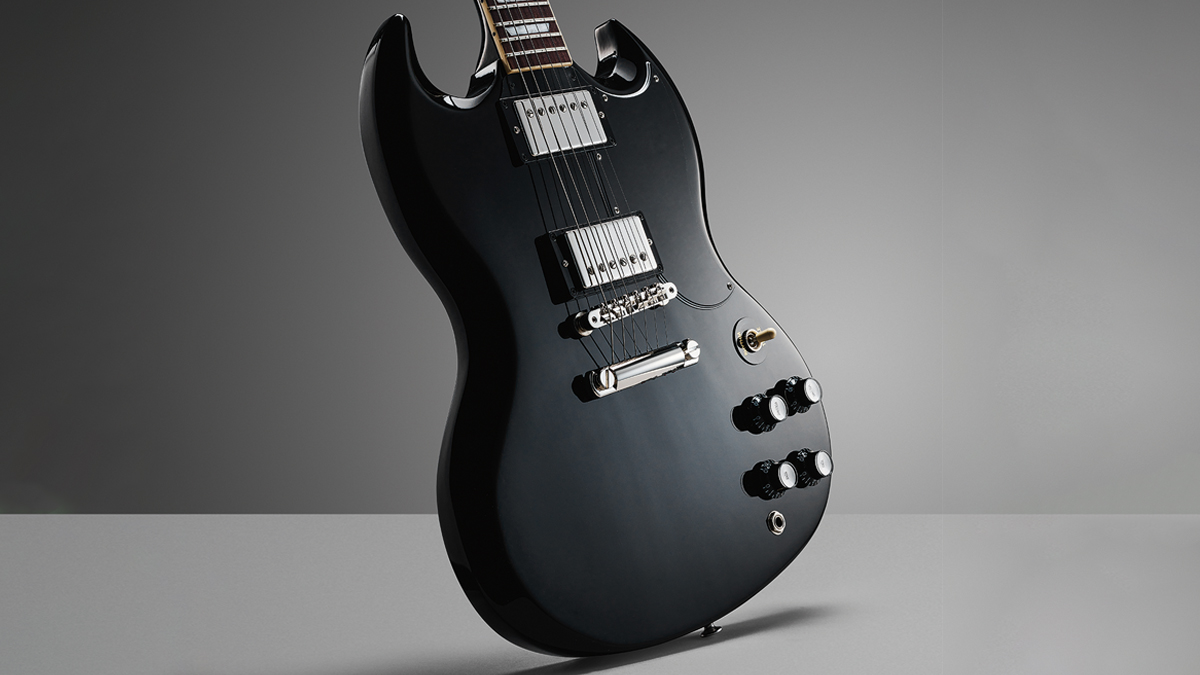Guitar World Verdict
This top-tier SG is stripped-down like the originals and a bona fide rock machine, but it can do a lot more besides. And it sure wears that Ebony finish well.
Pros
- +
Classic rock tones.
- +
It's a lot of fun to play – lightweight and zippy.
- +
Ebony finish is beyond cool.
Cons
- -
Pricey.
You can trust Guitar World
Anyone who attended the 1991 Monsters Of Rock festival at Donington Park, England, or has whiled away a Friday night, supping cold ones and enjoying AC/DC’s heroic headlining set on video, will recognise this Gibson SG. It’s a dead ringer for Angus Young’s weapon of choice on the night.
Finished in Ebony, with a rosewood fingerboard and acrylic trapezoid inlays, the five-ply teardrop pickguard, the MOP ‘pineapple’ inlay on the headstock – it’s a classic.
The SG Standard ’61 is a Les Paul design, introduced in a time when Gibson momentarily discontinued the now-storied singlecut. Famously, Mr L. Polsfuss did not love the SG. The rest of the world did. The number of SG players, and the diversity of styles they play, speaks to its versatility. There’s something fundamentally appealing about the SG build.
Great designs always have an element of simplicity. It has a heavily bevelled mahogany body, a SlimTaper C profile neck (also mahogany) that joins the body at the 22nd fret, opening up all of that fretboard for exploration.
At first, an SG can feel all neck, as though the 24.75” scale length was a conservative ballpark estimate. But once you acclimatise it is incredibly comfortable, lightweight, under 7lbs, and that neck profile strikes a fair compromise between speed and comfort.
Gibson says these ’60s Burstbuckers are voiced for “added power and top end”, and they are not wrong. With everything up on 10, fully open, the bridge ’bucker is all puckish treble, but it’s not ice-pick to the front row. There is depth. It’s musical. There are mids. Whether working open chords with a little drive, digging into a bend, or playing a downtuned doom-metal riff at C#, it has bite and clarity.

Backing off the treble, say, to seven on the dial, takes some of the edge off. The control loom is tidily hand-wired with Orange Drop capacitors, and so when you do adjust these dials the sound actually changes.
The neck pickup is labelled ‘Rhythm’ on the poker chip washer, but from ripping piano-esque cleans for jazz through to rich blues tones and nasal high-gain leads, anything goes. The middle position is the wild card; now this is a rhythm tone…
With its tidy build and slinky factory setup, there’s very little to complain about. You can see why Sister Rosetta Tharpe, Angus Young, Tony Iommi, Robby Krieger, Derek Trucks et al made the SG their own. It’s stripped-down yet versatile, a platform for rock ’n’ roll and a lot more. Thankfully, it now comes in black.
Specs
- PRICE: $1,999/£1,899
- TYPE: Solidbody electric guitar
- BODY: Mahogany
- NECK: Mahogany, SlimTaper ‘C’
- SCALE LENGTH: 24.75” / 628.65mm
- NUT/WIDTH: Graph Tech / 43.05mm
- FINGERBOARD: Rosewood, 12” radius with acrylic trapezoid inlays
- FRETS: 22, Medium Jumbo
- PICKUPS: 2x Gibson USA ’60s Burstbuckers
- CONTROLS: 3-way pickup selector, 2 x volume, 2 x tone
- HARDWARE: Vintage Deluxe with Keystone Buttons, ABR-1 Tune-O-Matic bridge with aluminium stop bar
- CONTACT: Gibson
Jonathan Horsley has been writing about guitars since 2005, playing them since 1990, and regularly contributes to publications including Guitar World, MusicRadar and Total Guitar. He uses Jazz III nylon picks, 10s during the week, 9s at the weekend, and shamefully still struggles with rhythm figure one of Van Halen’s Panama.
“It combines unique aesthetics with modern playability and impressive tone, creating a Firebird unlike any I’ve had the pleasure of playing before”: Gibson Firebird Platypus review
“This would make for the perfect first guitar for any style of player whether they’re trying to imitate John Mayer or John Petrucci”: Mooer MSC10 Pro review












